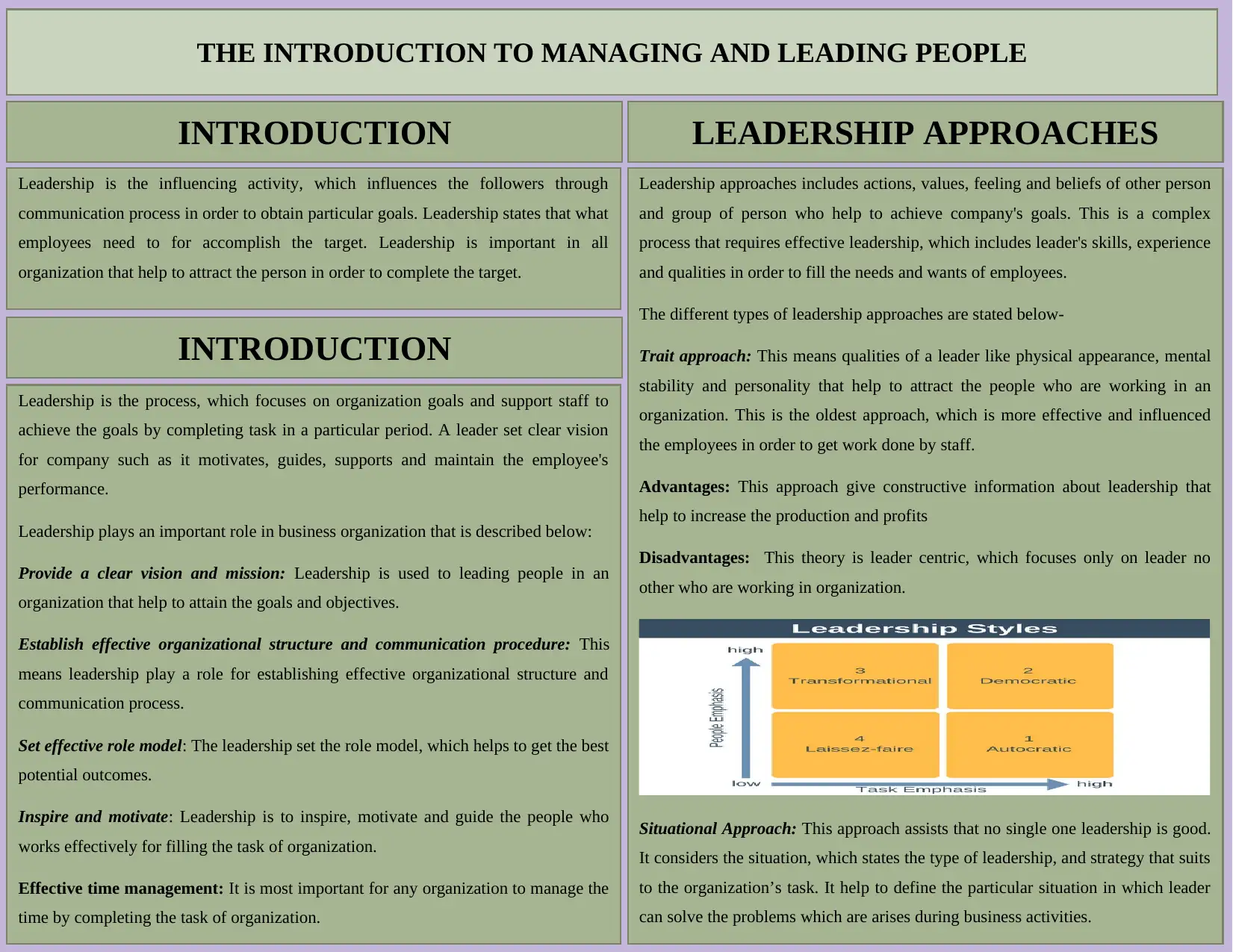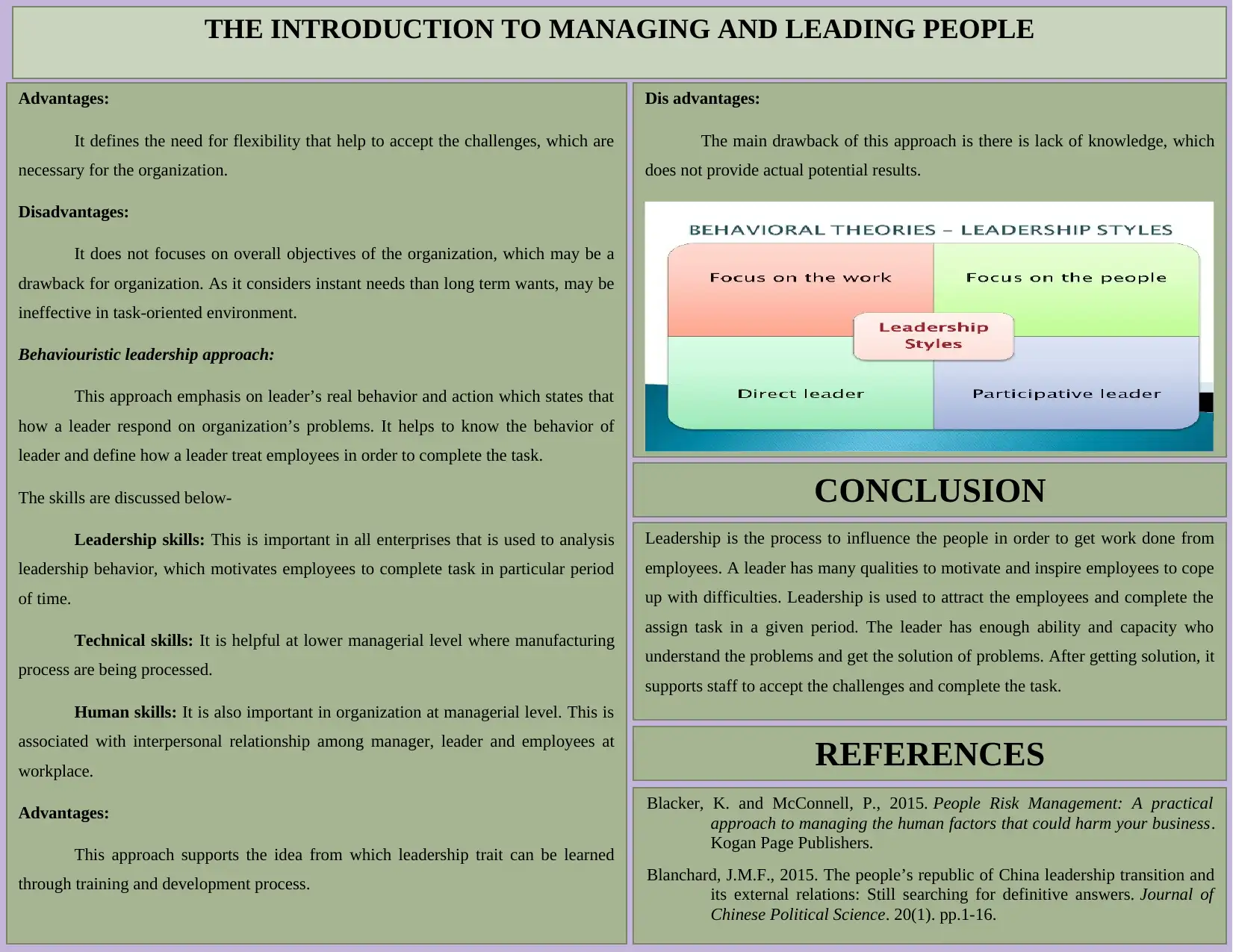Managing & Leading People: Examining Different Leadership Approaches
VerifiedAdded on 2023/02/01
|2
|846
|71
Essay
AI Summary
This essay provides an introduction to managing and leading people, focusing on different leadership approaches. It discusses the concept of leadership as an influencing activity aimed at achieving organizational goals through the actions, values, and beliefs of individuals. The essay examines various approaches, including the trait approach, which emphasizes the qualities of a leader, and the situational approach, which considers the context in determining the most suitable leadership style. Additionally, it explores the behavioristic leadership approach, focusing on a leader's real behavior and actions in response to organizational problems. The essay concludes by highlighting essential leadership skills, such as technical and human skills, necessary for effective management and leadership in enterprises, emphasizing the importance of motivating and inspiring employees to overcome challenges and complete tasks within specified timeframes. The document is available on Desklib, a platform providing AI-based study tools and solved assignments for students.
1 out of 2








![[object Object]](/_next/static/media/star-bottom.7253800d.svg)